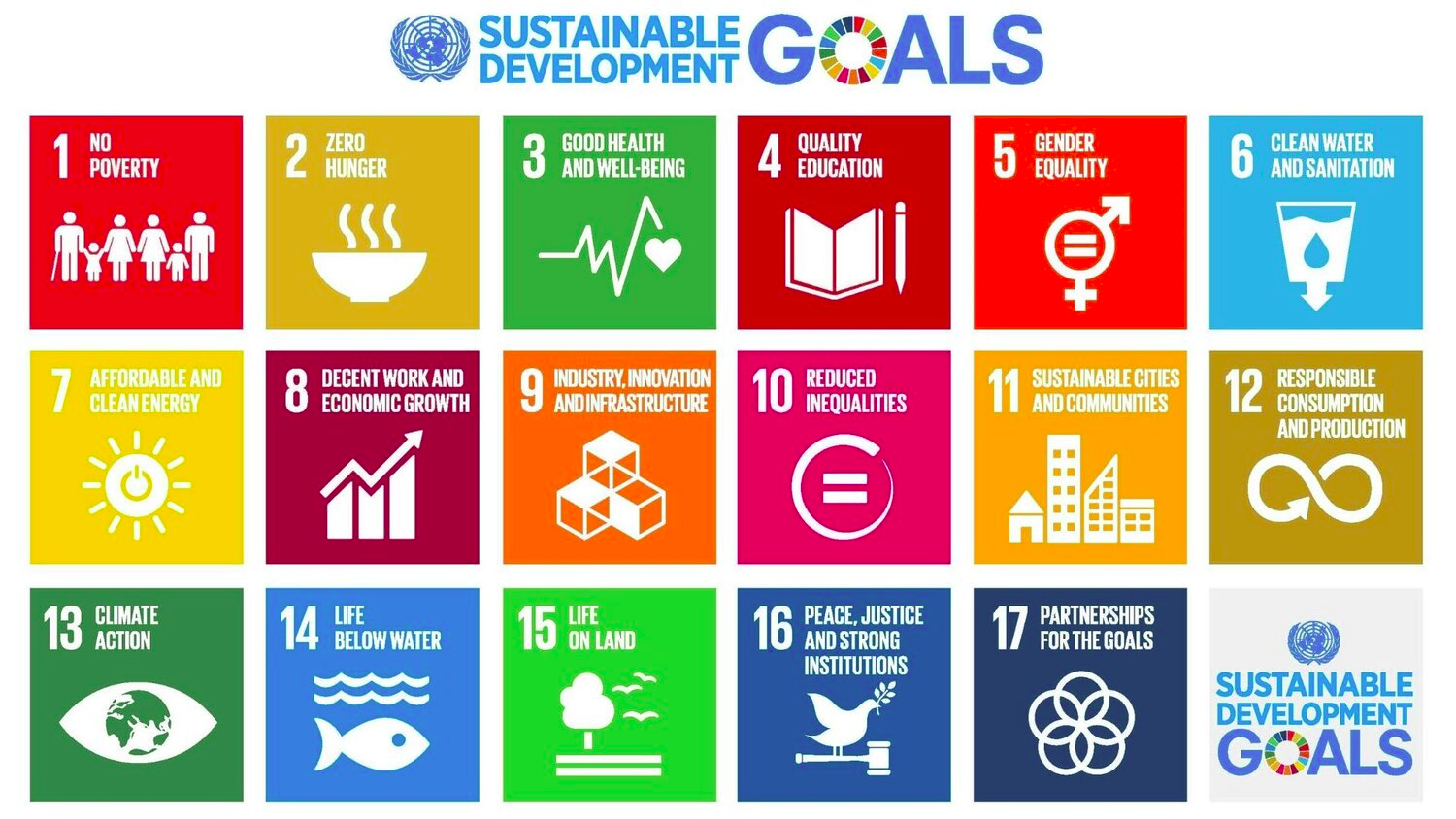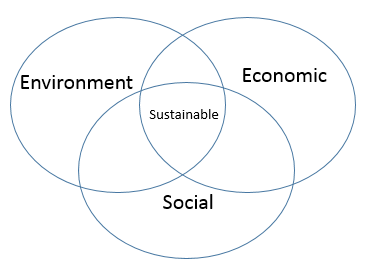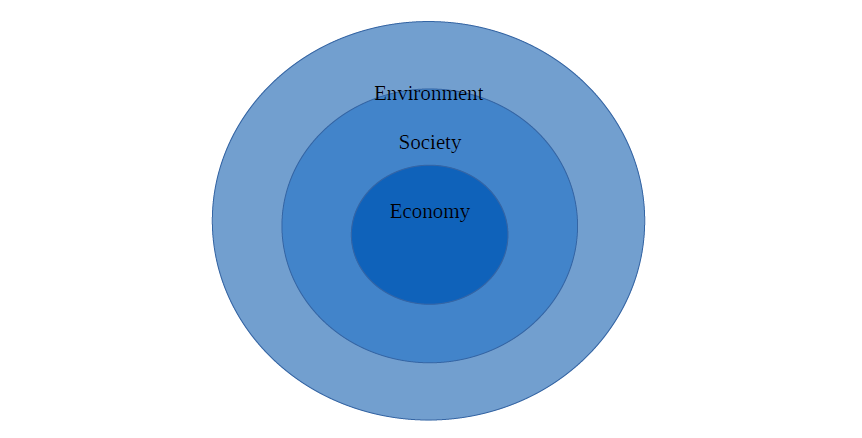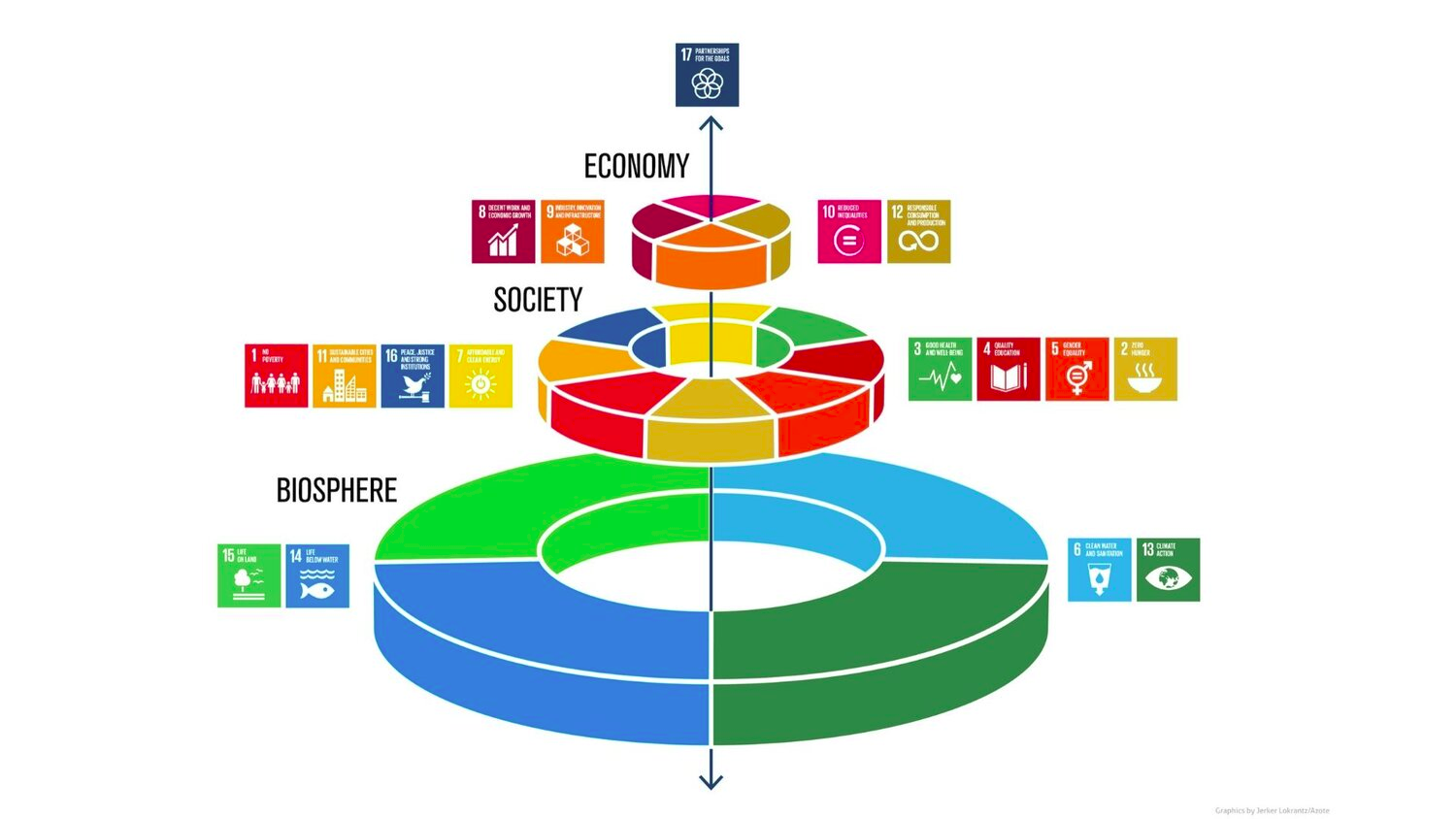sdgsarrangedsustainablesystem - restart.utopia.sk
SDGs arranged in a coherent system of sustainability
A. Mester
The importance of the Sustainable Development Goals
By the beginning of the 21th century it became clear for the humanity that the globalized socioeconomic system it has developed is endangering not only the biosphere, but its own functionality as well. During the last decades there were increasing efforts to articulate those expectations that the humanity has to meet in order to transform this global society into a sustainable operation mode integrated in the biosphere.
An important point of this journey was the Rio de Janeiro Earth Summit in 1992. Such proposals as the Agenda 21 and the Millennium Development Goals were formed, which contributed to important developments in the field of reducing poverty, increasing life expectancy and schooling. As it turned out, the problem with these great achievements was that the process had a negative effect on the ecological sustainability as the concept of Planetary Boundaries proves. A more thorough solution for the problem, was formed during the UN Sustainable Development Summit in New York in 2015. These are the Sustainable Development Goals – in short the SDGs – 17 actionable goals, with several targets that are intended to be reached by 2030. The SDGs cover more broadly the aspects of sustainability incorporating the fields of ecology, society and economy.
The SDGs are:
1) No Poverty
2) Zero Hunger
3) Good Health and Well-being
4) Quality Education
5) Gender Equality
6) Clean Water and Sanitation
7) Affordable and Clean Energy
8) Decent Work and Economic Growth
9) Industry, Innovation and Infrastructure
10) Reducing Inequality
11) Sustainable Cities and Communities
12) Responsible Consumption and Production
13) Climate Action
14) Life Below Water
15) Life On Land
16) Peace, Justice, and Strong Institutions
17) Partnerships for the Goals

Figure 1.: The SDGs designed by the United Nations
Approaches to sustainability
When we speak about sustainability, we have to be conscious about three different aspects or fields of the concept. For many people “sustainability” is still only a synonym for environmental protection. For the more informed people and experts of the field, it is obvious that at least the social sustainability and the economic sustainability are two inevitable aspects of the concept. The underlying logic is the same: a system, entity, structure or development trajectory of the present time is sustainable only if it makes it possible in the future to maintain the circumstances for its operation.
If we are aware of these three aspects of sustainability, we can see that an activity or entity can count as sustainable from one of these aspects but unsustainable from another. The actual global problems are caused by the fact that the concept of sustainability was not applied in the totality of its meaning. For an economic activity a narrow approach of sustainability means that it can be sustained economically, the balance of costs and revenues can be sustained, there is a demand (natural or artificially stimulated) for the products or services it provides and there are resources that can be harnessed. The externalities, the services that the ecosystem of the nature provides to maintain the activity or the social fabric that is provided by the society that makes the economic activity profitable or even possible are not taken into consideration in this narrow approach.
But even if we are aware of a wider meaning of sustainability, it is another question what relationship or wider system we use to put them together. A common image presenting the sustainability as three overlapping circles is shown on Figure 2.

Figure 2.: Three aspects of sustainability as overlapping circles
In this representation of the concept in the middle part fits in all the three aspects of sustainability. If a business or an economic activity is is placed here, it means that it is not only economically sustainable but also socially and environmentally. That makes sense and communicates the importance of using broader, integrated perspective. But the picture also indicates that there are non-overlapping territories, so there could be activities that are sustainable only socially or economically but unsustainable from environmental perspective. If we aim for a comprehensive approach to sustainability, we can not be satisfied with such results, we have to be aware that the ecological perspective is of sustainability is inevitable.This leads us to another representation where the three aspects are also symbolized by circles but their relations are different. As we see in Figure 3, the circles form a nested system where the three layers overlap, thus anything that is a economically sustainable is automatically socially and environmentally sustainable as well.

Figure 3.: Three aspects of sustainability as concentric circles, a nested system
This model – which is also called “bullseye” – shows the real importance of Social and Solidarity economy, in fact it implies that the whole economy should be transformed and re-designed based on its concepts. The SSE should not only aim for creating an alternative to the mainstream economy, but the longer term goal should be to catalyze this transformation. But it also implies that the SSE should not be satisfied with only taking into consideration the social aspects besides the economic ones, it also should be aware to integrate the environmental sustainability.
SDGs and the nested circles of sustainability
The SDGs are a list of 17 interlinked goals, which are essential to ensure the survival of the humanity on Planet Earth. But as a mere list, the real complexity and the interrelations between them are not explicitly shown. The SDGs as presented in Figure 1 – sometimes referred to as a “Christmas Calendar” – does not show a systemic perspective. It suggests that we should only pick from the menu and resolve achieve these goals one by one, the links, structure and hierarchy is hidden.The Stockholm Resilience Centre has developed a model to support systemic thinking in connection with SDGs. It is in coherence with the nested systems model of the sustainability. All the SDGs are grouped into the field their targets fit into and the layers of sustainability are shown as a “wedding cake” as we see in Figure 4.

Figure 4.: Wedding Cake model of the SDGs developed by the Stockholm Resilience Centre
When we approach the SDGs using this systemic perspective, it is more visible that we can not focus only on one preferred SDG, because the progress on one specific goal can hider the achievement of other goals or even endanger them. We can not work on all of them at the same time, we have to chose the most appropriate ones to directly affect, but this does not mean that we can not see the whole picture as an integrated system which is more than its parts.
Conclusion
The Sustainable Development Goals are a promising attempt of the humanity to transform towards a state which is environmentally and socially just, it sets 17 goals to be achieved until 2030 from all this fields. These SDGs can be organized in a coherent system applying the nested approach to the fields of sustainability. This not only presents the real potential and central role of the Social Solidarity Economy, but also provides useful indicators that can direct its energies into generating fundamental transformation in the society.
References
Charlotta Holmström - Systemic Approach to Agenda 2030, https://www.timerepaircorp.com/blog/systemic-approach-to-agenda-2030
Rockström, J and P. Sukhdev. (2016) - How food connects all the SDGs. Stockholm, Sweden: Stockholm Resilience Centre.
